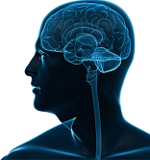Neck Injury as Potential Contributor to Concussion Symptoms
In 2015, Dr. John Leddy and his groundbreaking concussion team at the University of Buffalo published a peer reviewed article cautioning that symptoms after head injury, including cognitive symptoms, that have traditionally been ascribed to brain injury can originate, at least in part, from injury to the neck, He counseled that the cervical spine should be examined and, if injured, should be treated to address these symptoms. “Brain or strain? Symptoms alone do not distinguish physiologic concussion from cervical/vestibular injury.”
A review of the literature published not long after the Leddy article, in the Journal of Sports Medicine, sounded a similar theme. “Cervical Spine Involvement in Mild Traumatic Brain Injury: A Review.” It noted that many post-concussion symptoms can be explained by injuries to structures near or in the head, other than the brain itself. “For example,” the authors note, “following a trauma, structures such as the cervical spine, the vestibular ocular system and the temporomandibular joint can be injured.” They note, for example, that “neck pain, headaches, dizziness and balance dysfunction are common symptoms associated with both mTBI and WAD” (cervical spine injury.) Addressing neck injuries, they suggest, may lead to better concussion recovery. A randomized controlled trial testing this hypothesis is currently in process.
Introducing the Craniocervical Junction (CCJ)
Drawing the conclusion that attention to the cervical spine is an important component of brain injury evaluation and treatment does not mean that concussion symptoms originate with injury to either the neck or the brain. An injury to one can impact the other. A particularly vulnerable structure involved in many concussion injuries is the Craniocervical Junction (CCJ). The CCJ is comprised of the inferior surface of the skull, the atlas and axis, as well as the muscles and connective tissues that attach the skull to the cervical spine. I am privileged to be associated with a multidisciplinary concussion team that includes a chiropractor, Andrew McCanse at Precision Chiropractic. At a recent presentation, Andrew explained, with reference to several chiropractic and allopathic articles, that injury to this region is often overlooked and may impact the function of the entire central nervous system including the brain.
The CCJ encloses central nervous system encephalic vasculature and the cerebral spinal fluid (CSF) system. Malformation and misalignment can lead to a constellation of cerebral and other neurologic symptoms (It can obstruct both blood flow and CSF flow) leading to visual disturbance, headaches, dizziness, fatigue and poor concentration (the most common concussion symptoms.) Failure to evaluate this structure and treat any damage can slow recovery.
A leading researcher in the chiropractic field, Dr. Scott Rosa, has published extensively on “Craniocervical Junction Syndrome” and its contribution to brain injury symptoms (and has treated many high profile patients, including Jim McMahon, former Chicago Bills quarterback.) One of his more accessible articles is “Craniocervical Junction Syndrome: Anatomy of the Craniocervical and Atlantoaxial Junctions and the Effect of Misalignment on Cerebrospinal Fluid Flow”.
Of personal note, I have referred concussion clients to Dr. McCanse. Some have reported more improvement than with any other treatment (others have reported no benefit.). Concussion symptoms do not necessarily originate from injury to the cervical spine or craniocervical junction, but when they do, in whole or in part, treatment of these structures cannot be overlooked.
a

